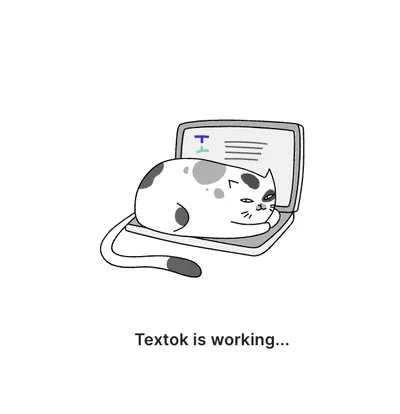Doesn’t it seem odd how difficult it is to choose words for things everyone inevitably comes across at some point in life? Love. Pain. Loss. Gender. Sexuality. Discrimination.
Sadly, we humans have mistreated each other for as long as we have existed.
But we at Writitude want to believe that humanity has already gone a long way to acknowledge and fight discrimination.
We also know that the fight is far from over and contributing to it is a must for our team.
That’s why we are writing a series of articles and guides on inclusive copy. In this blog article, we share our thoughts on sexism in marketing communication.
In addition, we have comprised a guide with practical tips for creating less sexist content.
If you would like to add something to our guide, feel free to save it in your notes for later editing.
Writitude is trained to spot inappropriate phrases and clichés, and you can add your own examples depending on your needs and preferences to make the Writitude manual fit your company and brand like a glove.
So, what are our thoughts on sexism in copywriting, how can we work together to combat sexism in your communications?
Sexism hurts everyone
There is simply no arguing that in the course of history, women have been oppressed way more than men.
However, we believe that prejudice does not merely hurt the oppressed — it hurts the whole of society.
The less freedom and self-expression there is for women, the less freedom men have, simply because they are bound to a specific masculine code of dictated behaviour discernible to that of the ‘opposite sex’ (why opposite, anyhow?)
To name one example, experience and common sense tell us that the same people who like to say things like “Man up!” or “Grow some balls!” not usually happy to hear these words back when they find themselves in a difficult situation.
In the long run, everybody benefits from a system where sympathy and respect are inherent, not precious commodities reserved for a chosen few.
We encourage everyone to participate in the fight against sexism — if not for the sake of others, then for your own dear selves.
Copywriters at the informational forefront
We believe that copywriting plays a crucial role in this fight. Whether you like it or not, brands’ voices are an intrinsic part of your informational background — no matter where you live and what your income is (or whether you have any income at all).
Brands contribute a great deal to public opinion and the emotional climate in society.
Communication and texts are not simply about promoting products and services but about promoting ideas and values as well. This is why inclusive language is always a good idea.
How do you address your clients? When writing about products typically associated with male or female customers, do you try to make your copy more inclusive so that men feel no shame in using beauty products and women don’t feel excluded from the lucrative world of construction tools?
When you use humour in your copy, do you check its offensiveness with anyone?
Do you try to make your storytelling diverse by attributing activities traditionally associated with one gender to characters of another gender?
“Her daughter Marla came home from football practice. John, being a nurse, cares about his patients.”
Do you use non-binary characters too? “Lee, who works at the post office, loves their job.”
Of course, these are all details. But writing is all about detail, whether you are working on a poem, an academic paper or an advertisement.
Change is a complex and lengthy process, and big heroic acts need to be aided by smaller efforts — including those of copywriters.
Sexist jokes are never okay
Toxic, sexist humour.
“How do you hide a carton of cream from your husband? Just put it in the refrigerator, he’ll never find it!”
“Looks like my brother has got man flu,” and so on…
Are misandrist jokes funny? Yes, they sometimes make us laugh. Do they really balance the scale of social justice? We highly doubt that.
First of all, misandrist humour usually doesn’t target misogyny. It targets men. Even more so, it often targets men who want to be feminist allies.
Men who are supportive of their wives, sisters, daughters and friends. Men who are willing to unlearn misogyny and educate themselves about feminism.
We at Writitude believe in the power of humour. And precisely for this reason, we think that including humour in your copy is a serious decision. (One day, we’ll write a blog on this!)
When you decide to use humour in your copy to take on sexism, ask yourself whether the joke targets prejudice and stereotypes rather than men or women as a group.
Without disclosing the brand, try the joke on several people whose ethics you trust and ask them how they understood the gist of your remark.
If anyone from your focus group finds the joke uncomfortable, ask them how they would rephrase it to make it less sexist and more anti-sexist.
Sexism goes hand in hand with transphobia
(Keep your pronouns in check)
We are convinced that resisting sexism is impossible without transgender awareness.
Misogyny and misandry not only target cisgender women and men — they target transwomen and transmen as well.
The same goes for non-binary people. Whether it’s aggressive mocking or passive ignoring, it is still discrimination.
Our stand on gender is pretty simple — everyone has a right to their own gender identity.
In most cases, we imply that our copy will be read by male, female and non-binary people simultaneously. This is why we will use the neutral “they” whenever possible.
If there are no neutral pronouns in your language, we advise you to use plurals whenever possible (“Clients can create accounts using their e-mail”).
We know this isn’t a perfect solution because plural forms are gendered in many languages.
However, when you use the plural in your writing (Clients), the reader will probably picture a multitude of clients of all genders, not an abstract male client, as would be the case with a singular noun.
High heels and white collars
(What about formal communication?)
In many cases (especially in conservative white-collar fields like banking and finance), gendered communication is often preferred to gender-neutral communication out of pure habit.
Oftentimes the only reason why a brand addresses its clients as “Dear Mr./Mrs.” instead of “Dear [First Name]” is not the management’s strictly binary views but the fact that the brand has not considered updating its communication patterns from several decades ago.
While high heels are no longer mandatory at even the most formal functions (finally!) and neckties seem to be going extinct, formal communication is also changing.
What was considered unacceptably chummy 30–20 years ago (like addressing the client or partner by their first name) is becoming the neutral norm in many societies.
Of course, the rules vary significantly from brand to brand but there is no doubt that the paradigm is shifting.
So, if you are working on a brand’s communication, feel free to question the necessity of addresses like “Dear Mr./Mrs.” and use gender-neutral greetings whenever possible.
Yes, you have to pick sides
Now, when a large part of the world population has accepted the sad historical truth of oppression and discrimination, we are trying to right this global wrong.
However, there is no right or wrong way as to how exactly this should be done – as long as we attempt to work together with a patient ear and empathic heart.
Still, the complex pattern of views and opinions regarding sex and gender can be confusing.
Should you strictly ban specific terms from communication or try to reclaim them by putting them in an empowering context?
Do you use “Latinxs” or “people of Hispanic origin”? And what about the much-debated terms like “menstruating persons” or “people with a uterus”?
On the one hand, these terms are more trans-friendly than “female-bodied”; on the other hand, they reduce one’s essence to a bodily function.
There are some practices on which there is no consensus. Some brands and individuals use them to demonstrate inclusivity and make everyone feel seen, while others find them unclear and sometimes even dehumanising.
While we cannot provide a recipe that fits everyone because every brand is different, we are sure that consistency is the key.
Depending on your target audience, goals and values, you may choose either an entirely gender-neutral or a gendered approach.
You may embrace the recently-created suffixes and terms in your language and use them in your content, or you may communicate inclusivity with more conventional means.
The sad truth is that you will never make everyone happy. No matter what approach you run with, some (hopefully, the majority of your audience) will like and support you, some will find you uninteresting, and some may resent you.
Brand communication is no different from real life in that aspect. We all have friends, as well as we all know people who don’t love us — it’s only normal.
However, your aim as a brand is to keep and grow your supportive audience. And to achieve this, you need integrity.
By switching between several approaches, you will alienate the audience who supported you initially and earn even more distrust in the eyes of those who did not like you in the first place.
Clear communications guidelines, backed by practical examples, will not only save you time and effort — they will help you keep your integrity and build a mutually rewarding relationship with your customers and partners.
So, be emphatic, be thoughtful, be consistent — and don’t forget to look at our inclusive language guide for more tips on bias-free brand communication. Together, we can make an effort that counts!


